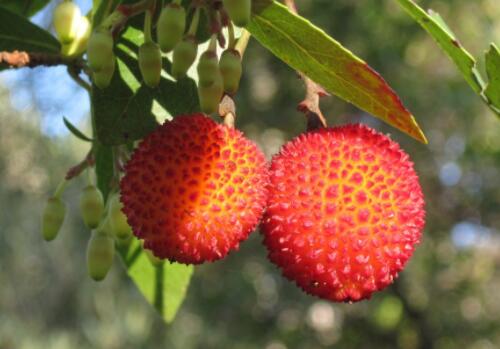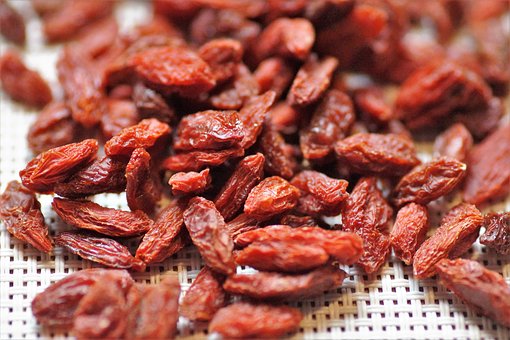Solanaceae plant tomato (tomato) how much is the market price per jin? What kind of variety is good for soilless cultivation? When will you plant it?
Tomato, also known as tomato and persimmon, is a common fruit in China, which is deeply loved by people because it is rich in vitamins, carotene and a variety of trace elements. How much is the market price of tomato (tomato)? What kind of variety is good for soilless cultivation? When will you plant it? How do you plant it?

The latest market price:
Variety selection
Organic ecological substrate cultivation has no strict requirements for tomato variety selection, so we should choose varieties with high yield, disease resistance and good quality according to the consumption habits of local residents. At present, large fruit type Maofen 802, Zhongza 9, Jiafan 15, Zhongshu 4 and so on are mostly used in production.
Cultivation time:
The cultivation of tomato with organic ecological substrate can be carried out in solar greenhouse and plastic greenhouse, and can be cultivated in early spring, late autumn and winter. The early spring stubble was sown in late January and planted in late March, the autumn delayed stubble was sown in late July and planted in early September, and in winter and spring in late November and in late December.
Cultivation techniques:
1. Construction of cultivation bed and substrate loading.
After soil preparation, the cultivation trough is dug according to the north-south direction, with an inner diameter of 0.48 meters and a depth of 0.15 meters. The bottom of the trough is covered with a layer of plastic film to isolate from the soil. The trough is filled with a matrix of 2m3 cubic meters, and the ratio of the matrix is peat ∶ slag = 4 ∶ 6. Before loading the tank, 5 kg of solid organic fertilizer and 1.5 kg of ternary compound fertilizer should be mixed into each cubic meter of substrate.
2. Drip irrigation system
The natural pressure drip irrigation of the storage tank is adopted, and an independent storage tank is established with a single shed. The pool is 4 meters long, 1.5 meters wide and 2 meters high, and the bottom of the pool should be 0.5 meters higher than the ground level. In order to prevent shading and occupying too much planting area, the pool should be built along the greenhouse or greenhouse gables. The main pipe in the shed and the drip irrigation belt in the cultivation trough can use plastic pipes and grooves to lay two droppers, and cover the dropper belt with a narrow plastic film with 0.1mm thickness to prevent drip irrigation water from spraying and evaporating.
3. Seedling raising and planting
The artificial soilless pot seedling method was used to raise seedlings. The seedling substrate was mixed with peat and vermiculite at a volume ratio of 2 ∶ 1, and then mixed with 10 kg of dried chicken manure in 1 cubic meter of mixed medium. The substrate was watered thoroughly, sowed after the water was seeped, 1 seed per hole, and the dry seeds were directly seeded. After sowing, the seedling substrate with thick 0.5cm was covered. The temperature was kept at 25: 30 ℃ before emergence, 20: 25 ℃ during the day and 10: 15 ℃ at night after emergence. The seedling plate should be kept moist. 3-4 true leaves can be planted in a plate for about 30 days. Before planting, the cultivation substrate was evenly leveled and watered once to make the substrate fully absorb water. After water infiltration, it was planted in two rows of pits per trough, so that the substrate was slightly higher than that of Miaotuo, the plant distance was 30cm, 3000 plants per mu, and little water was poured after planting.
4. Field management after planting.
① temperature. During the tomato growing period, the indoor temperature maintained 21: 24 ℃ during the day, and began to show off when it exceeded 27 ℃, and 16: 18 ℃ at night. The temperature can be kept high for 5 hours after sunset and low in the middle of the night.
② fertilizer and water management. Generally, water was watered once every 5 days after planting to keep the rhizosphere substrate moist. Fruit-setting logistics watering, usually once a day in sunny days, for 30 minutes. Little or no watering on cloudy days. According to the number of ears left and cultivation density of tomato, it is generally necessary to top fertilize for 4 times with 3 ears and 5 ears. Most of them were topdressing in the fruit expansion period, once every 10-15 days. 1.5 kg of sterilized chicken manure per cubic meter substrate plus 0.5 kg compound fertilizer (containing 14% nitrogen, 10% phosphorus, 14% potassium, 4% calcium, 9% magnesium, 6% sulfur, 2% iron and trace elements such as manganese, copper, molybdenum and boron). The fertilizer should be distributed evenly at the off-root 5cm, and it can infiltrate into the substrate with water.
③ plant adjustment. After the tomato blossoms and bears fruit, the plastic rope hanging method is used to support the plant. The pruning method adopts single pruning to reduce insect pests and increase yield. Generally, there are 3 to 4 fruits per ear. Remove old leaves, diseased leaves and lower leaves of mature fruit in time, and take them out for outdoor treatment. Generally, 6 / 7 ear and fruit pinching are left after autumn extension, and 8 / 10 ear fruit pinching in early spring or winter / spring stubble.
④ pollination. The production of pollution-free tomato generally does not use hormone treatment. Artificial oscillatory pollination or insect-assisted pollination was used. Artificial oscillatory pollination takes place at 10: 11 am every morning after flowering. Bee pollination is often used in insect-assisted pollination.
⑤ fruit bagging. Tomato was bagged after fruit setting was determined by flower thinning and fruit thinning. The bag length 220mm, wide 160mm, thick 0.08mm, colorless transparent polyethylene film bag. Put the film bag on the fruit, and then tie the mouth of the film bag together with a string on the fruit stalk, but not too tight, so as to prevent the lateral growth of the fruit stalk from being affected, while maintaining a certain degree of ventilation. The fruit can be listed together in the same bag. Fruit bagging can prevent pesticides from being sprayed directly on the fruit and adsorbed by the fruit epidermis before the safe interval.
5. Pest control
Give priority to agricultural control and biological control, supplemented by chemical control. When using chemical control, choose low toxicity and low residue pesticides, and pay attention to the safe use interval to ensure that the products are not contaminated by pesticides.
6. Harvest
After the fruit enters the green ripening stage, it is more appropriate to harvest when the top begins to turn orange.
Time: 2019-04-08 Click:
- Prev

Can bayberry trees be planted in the north? How do you plant it? How to control diseases and insect pests? What kind of medicine should I take?
Red bayberry, also known as Shengsheng plum, white plum, tree plum, belongs to the small tree or shrub plant of Myricaceae, which has high medicinal and edible value. Can bayberry trees be planted in the north? How do you plant it? How to control diseases and insect pests? What kind of medicine should I take? Can bayberry trees be planted in the north? Red bayberry is not suitable to be planted in the north.
- Next

Solanaceae plant medlar market price how much money a catty? Can I plant plants? When do you plant it? How does it work?
Lycium barbarum L. is a common Solanaceae plant in northwest China. It is widely cultivated because of its high medicinal value. At present, it is sold in all major markets and its price is small and expensive.
Related
- Fuxing push coffee new agricultural production and marketing class: lack of small-scale processing plants
- Jujube rice field leisure farm deep ploughing Yilan for five years to create a space for organic food and play
- Nongyu Farm-A trial of organic papaya for brave women with advanced technology
- Four points for attention in the prevention and control of diseases and insect pests of edible fungi
- How to add nutrient solution to Edible Fungi
- Is there any good way to control edible fungus mites?
- Open Inoculation Technology of Edible Fungi
- Is there any clever way to use fertilizer for edible fungus in winter?
- What agents are used to kill the pathogens of edible fungi in the mushroom shed?
- Rapid drying of Edible Fungi

